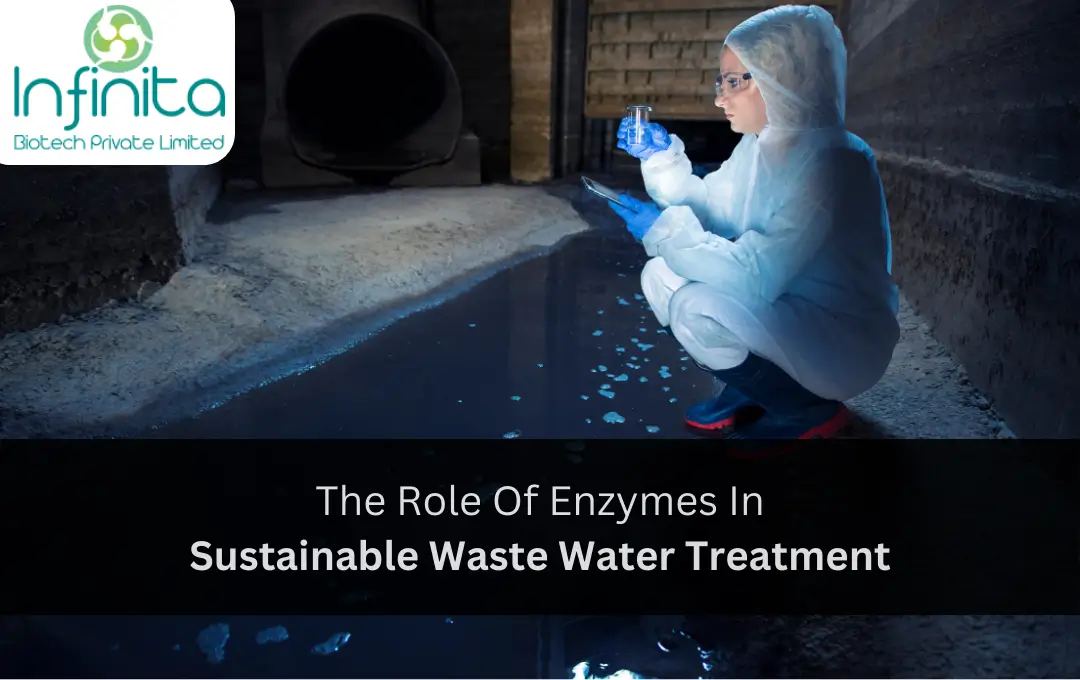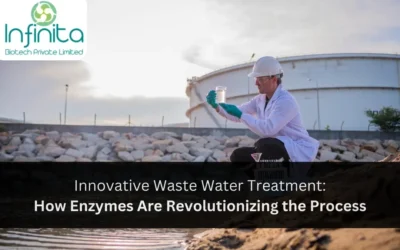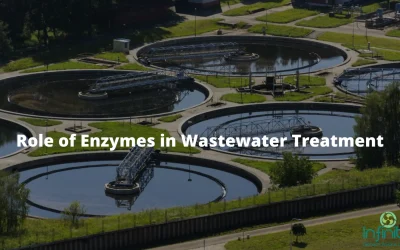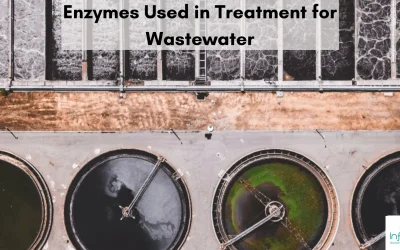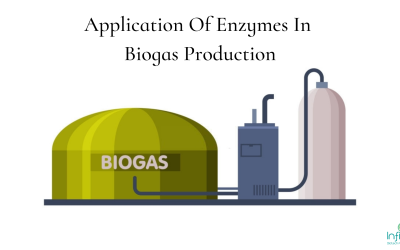Enzymes play a crucial role in sustainable waste water treatment, as they have the ability to break down organic compounds and remove pollutants from water sources. Understanding the functions of enzymes and their impact on waste water treatment is essential for developing effective and environmentally friendly treatment processes. Additionally, recognizing the importance of waste water treatment, both for the environment and public health, highlights the need for enzyme-based treatment methods. In this article, we will delve into the various aspects of enzymes in waste water treatment, explore their sustainability aspect, and discuss the challenges and future prospects in the field.
Understanding Enzymes and Their Functions
The Basic Structure of Enzymes
Enzymes are biological catalysts that facilitate chemical reactions in living organisms. They are composed of proteins, which are made up of long chains of amino acids. The specific arrangement of amino acids determines the unique structure of each enzyme and its ability to interact with specific substrates.
In addition to proteins, enzymes often require a non-protein component called a coenzyme or cofactor, which aids in the catalytic process. Coenzymes can be organic molecules or trace elements, such as vitamins and minerals.
Enzymes exhibit remarkable structural diversity, with some enzymes forming complex shapes that provide specific active sites for substrate binding. This structural complexity allows enzymes to carry out their functions with precision and efficiency, showcasing the intricate molecular machinery at work within living organisms.
How Enzymes Work in Biological Processes
Enzymes work by lowering the activation energy required for a chemical reaction to occur. They bind to specific substrates, creating an enzyme-substrate complex. This complex undergoes changes in shape and structure, allowing the reaction to occur at a faster rate.
Enzymes are highly specific in their action, as each enzyme is designed to interact with a particular substrate or group of substrates. This specificity ensures that only the desired reactions occur, minimizing wasteful processes and maximizing efficiency.
In waste water treatment, enzymes are used to target specific pollutants and facilitate their breakdown, making them an invaluable tool in the treatment process.
Furthermore, enzymes play a crucial role in the food industry, where they are utilized in processes such as fermentation, cheese-making, and baking. Their ability to speed up reactions and produce consistent results is essential for the large-scale production of various food products.
The Importance of Waste Water Treatment
The Environmental Impact of Waste Water
Waste water, if left untreated, can have detrimental effects on the environment. The release of untreated waste water into rivers, lakes, and oceans can lead to eutrophication, where excessive nutrients trigger algal blooms. These blooms deplete oxygen levels in the water, causing harm to aquatic life and leading to the creation of dead zones.
Furthermore, waste water can contain harmful substances such as heavy metals and pathogens, which can contaminate drinking water sources and harm both humans and wildlife. Proper waste water treatment is crucial to mitigate these environmental impacts and ensure the health and sustainability of our ecosystems.
Implementing advanced waste water treatment technologies, such as membrane bioreactors and ultraviolet disinfection, can help remove a wider range of contaminants from waste water, including pharmaceuticals and microplastics. These technologies play a vital role in safeguarding water quality and protecting fragile aquatic ecosystems.
The Health Implications of Untreated Waste Water
Untreated waste water poses significant health risks to both humans and animals. Pathogens present in waste water can cause waterborne diseases such as cholera, typhoid fever, and hepatitis. These diseases can spread rapidly, especially in areas with inadequate sanitation infrastructure.
By treating waste water and removing these pathogens, we can protect public health and prevent the spread of waterborne illnesses. Enzyme-based waste water treatment methods offer a sustainable and efficient approach to addressing these health concerns.
In addition to pathogenic risks, untreated waste water may also contain endocrine-disrupting chemicals (EDCs) that can interfere with hormonal systems in humans and wildlife. These EDCs have been linked to reproductive disorders, developmental issues, and other adverse health effects. Therefore, comprehensive waste water treatment processes that target EDCs are essential for safeguarding public health and ecological well-being.
Enzymes in Waste Water Treatment
The Process of Enzyme-aided Waste Water Treatment
Enzyme-aided waste water treatment involves the addition of specific enzymes to the treatment process to enhance the breakdown of organic pollutants. Enzymes such as lipases, proteases, and cellulases are commonly used in waste water treatment.
Lipases aid in the breakdown of fats and oils, while proteases target proteins, and cellulases break down cellulose. By incorporating these enzymes into the treatment process, the organic compounds present in waste water can be efficiently degraded, resulting in cleaner water output.
Enzyme-aided waste water treatment is a crucial step in the overall process of wastewater remediation. As wastewater containing organic pollutants enters the treatment facility, it undergoes a series of physical, chemical, and biological processes to remove contaminants. Enzymes play a vital role in the biological treatment stage, where they catalyze the degradation of complex organic molecules into simpler forms that are more easily removed from the water.
Types of Enzymes Used in Waste Water Treatment
In addition to lipases, proteases, and cellulases, there are various other enzymes that can be utilized in waste water treatment. Amylases, for example, break down starches, whereas oxidoreductases are involved in redox reactions. These diverse enzymes offer a wide range of applications in waste water treatment, allowing for tailored treatment processes based on the specific pollutants present.
Enzymes used in waste water treatment are often derived from natural sources such as bacteria and fungi. However, advancements in biotechnology have enabled the production of recombinant enzymes, further expanding the possibilities for enzyme-based treatment methods.
Enzyme technology continues to evolve, with researchers exploring new enzymes and enzyme combinations to improve the efficiency and effectiveness of waste water treatment processes. By understanding the specific properties and functions of different enzymes, treatment facilities can optimize their processes to achieve higher levels of pollutant removal and water quality improvement.
The Sustainability Aspect of Enzyme-based Waste Water Treatment
Energy Efficiency in Enzyme-based Treatment
Enzyme-based waste water treatment methods often require less energy compared to conventional treatment processes. The targeted action of enzymes enables the breakdown of pollutants at lower temperatures, reducing the energy needed for elevated temperatures in traditional treatment methods.
Additionally, enzyme-based treatments can be more efficient in resource utilization, as enzymes can operate in smaller quantities while maintaining high catalytic activity. This not only reduces costs but also minimizes the overall environmental impact of waste water treatment operations.
Moreover, the use of enzymes in waste water treatment can lead to a significant reduction in greenhouse gas emissions. By requiring less energy for operation, enzyme-based processes contribute to lowering the carbon footprint associated with waste water treatment facilities.
Long-term Benefits of Enzyme Use in Waste Water Treatment
Enzyme-based waste water treatment methods offer long-term benefits that go beyond immediate pollutant degradation. By promoting the use of enzymes, we can reduce the reliance on harsh chemicals and minimize the generation of harmful byproducts.
Furthermore, enzyme-based treatments have the potential for resource recovery, as certain enzymes can facilitate the extraction of valuable compounds from waste water, such as phosphorus or biogas. This recycling of resources contributes to a more sustainable and circular economy approach to waste water treatment.
Additionally, the implementation of enzyme-based treatments can enhance the overall water quality in receiving bodies of water. Enzymes can target specific contaminants more effectively, leading to cleaner waterways and healthier aquatic ecosystems in the long run.
Challenges and Future Prospects
Current Limitations in Enzyme-based Waste Water Treatment
Despite their numerous advantages, enzyme-based waste water treatment methods face certain limitations. One major challenge is the cost associated with enzyme production and implementation. Enzymes can be expensive to produce, and their stability and effectiveness can be influenced by various factors such as pH and temperature.
Another limitation is the limited understanding of how different enzyme formulations interact with various types of waste water. Further research is needed to optimize enzyme formulations and identify their compatibility with different waste water compositions.
Moreover, the scalability of enzyme-based waste water treatment methods is another challenge that needs to be addressed. While laboratory-scale studies have shown promising results, the transition to large-scale implementation can be complex. Factors such as reactor design, enzyme dosage, and overall system efficiency need to be carefully considered and optimized.
Potential Innovations and Developments in the Field
The future of enzyme-based waste water treatment holds great promise. Ongoing research aims to improve enzyme stability and activity under different conditions, making them more cost-effective and suitable for a wider range of applications.
Emerging technologies, such as enzyme immobilization techniques and nanotechnology, offer potential solutions to enhance enzyme performance and increase their lifespan in waste water treatment systems. These innovations may overcome current limitations and make enzyme-based treatments more accessible and economically viable.
Furthermore, the integration of artificial intelligence and machine learning algorithms in waste water treatment systems shows great potential. By analyzing vast amounts of data, these technologies can optimize enzyme dosages, predict enzyme performance under different conditions, and provide real-time monitoring and control of waste water treatment processes.
In conclusion, enzymes have significant potential in sustainable waste water treatment. Understanding their functions, recognizing the importance of waste water treatment, and exploring enzyme-based methods can lead to more efficient and environmentally-friendly treatment processes. Despite the challenges, ongoing developments and innovations in the field offer great prospects for the future. By harnessing the power of enzymes, we can contribute to the preservation of our environment, protect public health, and pave the way towards sustainable waste water treatment solutions.
